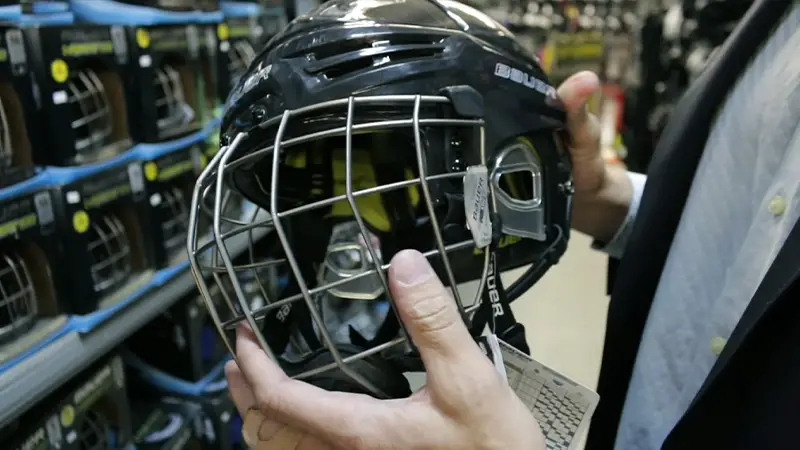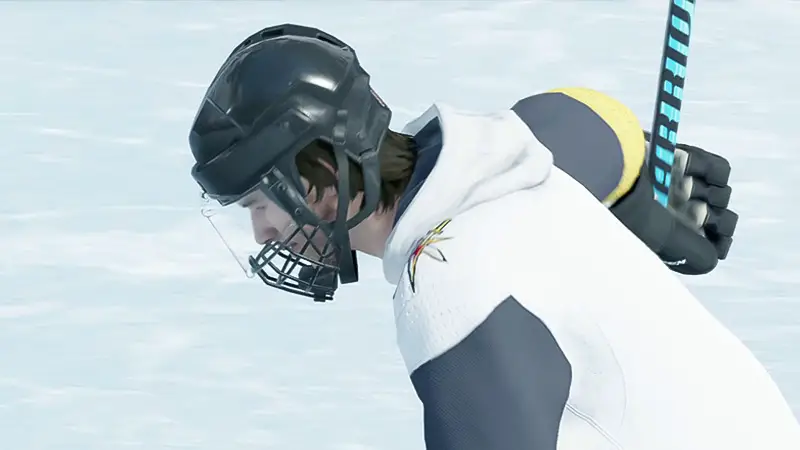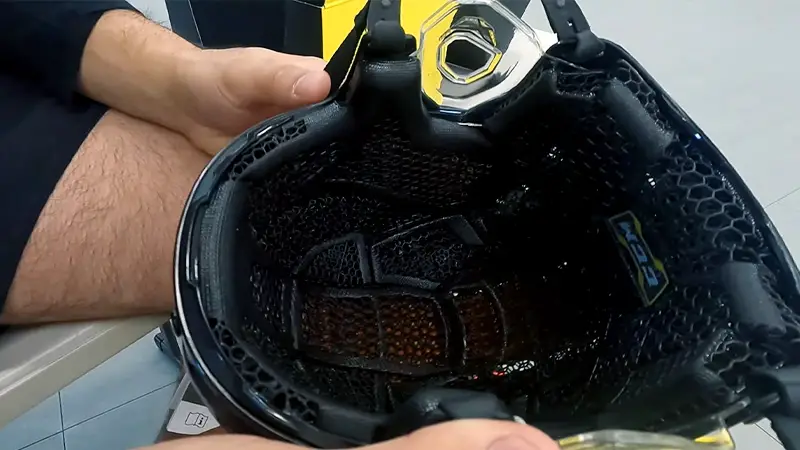In the high-octane world of professional hockey, where split-second decisions and lightning-fast plays dominate the ice, every piece of equipment matters. Yet, a curious trend has emerged – the removal of ear guards from helmets by many pro players.
This practice has sparked debates and discussions within the hockey community, pitting comfort and preference against safety and tradition. In this blog post, we delve into the reasons behind the question ‘Why do so many pro players take the ear guards out of their helmets?’.
From comfort concerns to the desire for enhanced auditory perception, the motivations behind this choice are diverse and intriguing. By examining the various perspectives, we aim to shed light on this ongoing debate and help both players and enthusiasts. So, stay focused.

Purpose of Wearing Ear Guards for Hockey Players
Hockey players wear earguards primarily to protect their ears from injury during gameplay. These protective devices are designed to shield the delicate structures of the ear, including the earlobe and the outer ear, from impact, cuts, and abrasions that can occur during the fast-paced and physical nature of hockey.
Ear guards are especially important in preventing “cauliflower ear,” a condition in which repeated trauma to the ear can cause the cartilage to become damaged, swollen, and disfigured. This condition can be painful and permanent if left untreated.
By wearing ear guards, hockey players reduce the risk of ear injuries, promote safety on the ice, and ensure the long-term health and appearance of their ears. These protective measures allow players to focus on their performance without worrying about potential ear injuries during the game.
Why Do So Many Pro Players Take The Ear Guards Out of Their Helmets?
Professional hockey players sometimes remove the ear guards from their helmets for several reasons:
Comfort and Fit
Some players find that removing the ear guards provides a better fit and increased comfort while wearing their helmets. A snug helmet fit is essential for safety, and for some individuals, ear guards can cause discomfort or pressure points.
Improved Hearing
Hearing plays a crucial role in communication and awareness on the ice. By removing ear guards, players may feel they have better auditory perception, allowing them to hear their teammates, coaches, or opponents more clearly during the game.
Tradition and Preference
Hockey culture can be deeply rooted in tradition, and some players may prefer the look and feel of a helmet without ear guards. This preference may be influenced by personal comfort or simply following the style of their peers and idols.
Customization
Professional athletes often have their equipment customized to their preferences. Some players may choose to remove ear guards as part of their personalized equipment setup to feel more in control and connected to the game.
It’s important to note that while some professional players remove ear guards, safety remains a priority, and players are required to adhere to league regulations regarding helmet safety. Many leagues have specific guidelines on helmet design and protective features to ensure player safety.
Safety Concerns and the Debate Regarding Wearing Ear Guard

The debate regarding wearing ear guards in hockey centers around a balance between safety concerns and player preferences. Here are some key points from both sides of the debate:
Safety Concerns
Ear Injury Prevention
Ear guards are designed to protect players from ear injuries, including those that can result in permanent damage or deformities like cauliflower ear. These injuries can be painful and have long-term consequences.
League Regulations
Many hockey leagues, especially at lower levels and youth levels, have mandated the use of ear guards as part of helmet safety requirements to reduce the risk of injuries.
Education
Coaches, medical professionals, and advocates argue that players may not fully understand the potential risks of not wearing ear guards, and they advocate for player safety and education on the importance of protective gear.
Player Preferences
Comfort and Fit
Some players find ear guards uncomfortable or believe that they interfere with the fit and feel of their helmets. A snug helmet fit is crucial for overall safety, and discomfort can be distracting.
Auditory Perception
Players argue that ear guards can impair their ability to hear on-ice cues and communicate with teammates effectively. Improved auditory perception is critical in a fast-paced, dynamic game like hockey.
Personal Choice
Many players argue that wearing ear guards should be a matter of personal choice, as they may feel confident in their ability to avoid ear injuries or accept the risks associated with not wearing them.
The debate over wearing ear guards in hockey reflects the tension between safety measures and player preferences. While player comfort and perception are valid concerns, safety remains paramount, especially in lower-level and youth leagues where regulations often require protective gear.
When Do Hockey Players Wear Ear Guards?

Hockey players typically wear ear guards as part of their protective gear whenever they are on the ice during games or practices. Here are some key times when hockey players wear ear guards:
During Games
Ear guards are a mandatory piece of equipment in most hockey leagues, especially at lower levels and youth levels. Professional players may have some flexibility in choosing whether to wear them, but they are still encouraged to do so for safety reasons.
During Practices
Players are encouraged to wear their full complement of protective gear, including ear guards, during practice sessions. While practices may involve less intense play than games, there is still a risk of injury from stray pucks, sticks, or collisions.
Officiated Events
Whether it’s an official game, scrimmage, or a sanctioned event, players are typically required to wear ear guards. These events often have specific safety regulations in place to protect all participants.
Skating Drills
Even during skating drills or off-ice training that doesn’t involve full contact, players should wear their complete set of protective gear, including ear guards. Accidents can happen at any time, so it’s important to maintain safety precautions.
Goalies
Hockey goalies wear ear guards as part of their goalie masks. These guards are designed to protect the ears and the side of the head from high-speed pucks and sticks.
Hockey players wear ear guards whenever they are participating in any organized hockey activity, whether it’s a game, practice, scrimmage, or any other event where there is a potential risk of ear injuries.
Demerits of Wearing Ear Guard While Playing Hockey

While wearing ear guards in hockey is generally considered important for safety, there are some potential drawbacks or demerits associated with their use:
Discomfort and Fit Issues
Some players may find ear guards uncomfortable or feel that they interfere with the fit and comfort of their helmets. A snug helmet fit is crucial for safety, and discomfort can be distracting during play.
Reduced Auditory Perception
Ear guards can potentially impair a player’s ability to hear on-ice cues and communicate with teammates effectively. In a fast-paced and dynamic game like hockey, auditory perception is critical for situational awareness.
Heat and Sweat Buildup
Ear guards can sometimes contribute to increased heat and sweat buildup inside the helmet, which may lead to discomfort and potential skin irritation.
Obstruction of Peripheral Vision
In some cases, players may feel that ear guards obstruct their peripheral vision, affecting their ability to see plays and opponents approaching from the side.
False Sense of Security
Some players may develop a false sense of security when wearing ear guards, believing that they are completely protected from all ear injuries. While ear guards reduce the risk of certain types of injuries, they do not make players invulnerable to all potential risks.
Cost and Maintenance
Ear guards are an additional piece of equipment that players must purchase and maintain. This can add to the overall cost and upkeep of hockey gear.
It’s important to note that the demerits of wearing ear guards should be weighed against the potential benefits, which include protection from ear injuries and compliance with safety regulations. The decision to wear ear guards ultimately comes down to a balance between individual comfort and safety considerations.
FAQs
Why do professional hockey players often remove ear guards from their helmets?
Many pros remove ear guards for enhanced comfort and auditory perception. They believe it provides a better helmet fit and improved hearing, aiding in communication on the ice.
Are there any safety concerns associated with removing ear guards?
Yes, removing ear guards increases the risk of ear injuries, including cauliflower ear. It’s essential for players to weigh personal comfort against the potential long-term consequences of ear injuries.
Do leagues have rules about wearing ear guards?
At lower levels and youth leagues, ear guards are typically mandatory to promote safety. In professional leagues, they may be optional, but players are encouraged to wear them.
Can players customize their equipment to remove ear guards?
Yes, professional players can customize their gear to remove ear guards for personal preference. However, they must still adhere to league helmet safety regulations.
How can players find a balance between comfort and safety when deciding to wear ear guards?
Players should consider their comfort, but safety should remain a priority. It’s important to consult with coaches, medical professionals, and equipment experts to make informed decisions about protective gear.
Wrapping Up
The decision to remove ear guards from hockey helmets among professional players is far from black and white. It’s a delicate balance between comfort, auditory perception, and safety.
As we’ve explored in this blog post, while some players opt for this customization for valid reasons, safety remains a paramount consideration.
Whether a player chooses to wear ear guards or not, it’s crucial that they make informed decisions, consult with experts, and prioritize their well-being on and off the ice.
The debate continues, reminding us that even in the world of professional sports, individual choices and preferences play a significant role in shaping the game. Thank you for your time.







Benjamin Kenyon